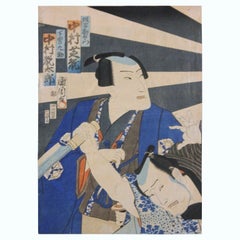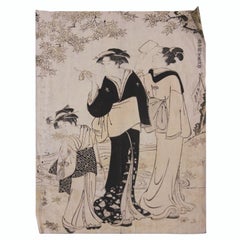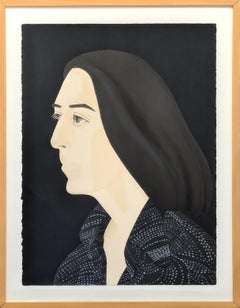Want more images or videos?
Request additional images or videos from the seller
1 of 10
Torii KiyonagaNew Year From the Series Precious Children's Games of the Five Festivals1801
1801
Price:$646.37
$900List Price
About the Item
- Creator:Torii Kiyonaga (1752 - 1815, Japanese)
- Creation Year:1801
- Dimensions:Height: 14.5 in (36.83 cm)Width: 10 in (25.4 cm)Depth: 0.004 in (0.11 mm)
- Medium:
- Movement & Style:
- Period:
- Condition:Wear is consistent with age.
- Gallery Location:Houston, TX
- Reference Number:Seller: CA35.2019.0627.11371stDibs: LU55134717711

About the Seller
5.0
Gold Seller
Premium sellers maintaining a 4.3+ rating and 24-hour response times
Established in 1969
1stDibs seller since 2014
884 sales on 1stDibs
Typical response time: 13 hours
Authenticity Guarantee
In the unlikely event there’s an issue with an item’s authenticity, contact us within 1 year for a full refund. DetailsMoney-Back Guarantee
If your item is not as described, is damaged in transit, or does not arrive, contact us within 7 days for a full refund. Details24-Hour Cancellation
You have a 24-hour grace period in which to reconsider your purchase, with no questions asked.Vetted Professional Sellers
Our world-class sellers must adhere to strict standards for service and quality, maintaining the integrity of our listings.Price-Match Guarantee
If you find that a seller listed the same item for a lower price elsewhere, we’ll match it.Trusted Global Delivery
Our best-in-class carrier network provides specialized shipping options worldwide, including custom delivery.You May Also Like
19th century color woodcut Japanese ukiyo-e print female geisha figure signed
By Utagawa Kuniyoshi
Located in Milwaukee, WI
This print is from a highly regarded series by the Edo woodblock artist Utagawa Kuniyoshi: in the period, there were at times prohibitions in depicting a...
Category
1850s Edo Figurative Prints
Materials
Pigment, Paper, Woodcut
Utagawa Kuniyoshi19th century color woodcut Japanese ukiyo-e print female geisha figure signed, 1852
$3,200 Sale Price
20% Off
H 21.5 in W 17.5 in
Plucking a Branch from a Neighbor's Plum Tree
By Suzuki (Hozumi) Harunobu
Located in Middletown, NY
A mischievous tableau with sexual overtones.
Tokyo: Shuei-Sha, 1768.
Woodblock print in colors printed on laid mulberry paper, 10 3/4 x 7 7/8 inches (273 x 200 mm), full margins. I...
Category
Mid-18th Century Edo Portrait Prints
Materials
Handmade Paper, Watercolor, Woodcut
$1,000
H 10.75 in W 7.88 in
The Actors Nakajima Wadaemon as Bōdara Chōzaemon and Nakamura Konozō as Gon of t
Located in Middletown, NY
Two minor villains from "Medley of Tales of Revenge" square off, as performed at the Kiri theatre, Tokyo, in May of 1794.
Toyko: Tsutaya Juzaburo, 1794.
Woodblock (nishiki-e) with ...
Category
Late 18th Century Edo Portrait Prints
Materials
Watercolor, Handmade Paper, Woodcut
Actor Iwai Shigaku as Somenoi in "Denka chaya adauchi"
By Kuniyoshi
Located in Middletown, NY
Actor Iwai Shigaku as Somenoi in "Denka chaya adauchi" (Revenge at the Denka Teahouse), by Shigeharu, Ryusai (also called Kuniyoshi)
Tokyo: Horie Ichiba Wataki, 1835.
Woodcut on la...
Category
Early 19th Century Edo Portrait Prints
Materials
Laid Paper, Handmade Paper, Woodcut
"Pictures Of Noh" - 1922 Original Japanese Woodblock Print
Located in Soquel, CA
"Pictures Of Noh" - 1922 Original Japanese Woodblock Print
Original Japanese woodblock print by Tsukioka Kogyo (Japanese, 1869-1927...
Category
1920s Edo Figurative Prints
Materials
Ink, Rice Paper, Woodcut
$568 Sale Price
20% Off
H 24 in W 18 in D 0.5 in
The Samurai Genta Kajiwara - Japanese Woodblock Diptych in Ink on Paper
By Utagawa Yoshitora
Located in Soquel, CA
The Samurai Genta Kajiwara - Japanese Woodblock Diptych in Ink on Paper
Boldly colored woodblock by Utagawa Yoshitora (Japanese, active c.1840-1880)...
Category
1860s Edo Figurative Prints
Materials
Paper, Ink, Woodcut
$1,280 Sale Price
20% Off
H 21 in W 32 in D 0.25 in
"Thirsty: the appearance of a town geisha in the Ansei era" - Woodblock on Paper
By Tsukioka Yoshitoshi
Located in Soquel, CA
"Thirsty: the appearance of a town geisha in the Ansei era" - Woodblock on Paper
From the series "Thirty-two Aspects of Customs and Manners" (Fuzoku sanjuniso)
Lively woodblock of a...
Category
1880s Edo Figurative Prints
Materials
Paper, Ink, Woodcut
$950
H 20 in W 14 in D 0.75 in
Lord on the Sand Castle - XX century Black & White Woodcut Print
By Franciszek Bunsch
Located in Warsaw, PL
Illustration for Jules de la Medelen's "Lord on the Sand Castle" ("Le Marquis Des Saffras")
FRANCISZEK BUNSCH (born in 1926) Franciszek Bunsch was born in Bielsko in 1926. He studie...
Category
1950s Contemporary Portrait Prints
Materials
Woodcut, Paper
$317
H 3.15 in W 4.14 in
Lord on the Sand Castle - XX century Black & White Woodcut Print
By Franciszek Bunsch
Located in Warsaw, PL
Illustration for Jules de la Medelen's "Lord on the Sand Castle" ("Le Marquis Des Saffras")
FRANCISZEK BUNSCH (born in 1926) Franciszek Bunsch was born in Bielsko in 1926. He studie...
Category
1950s Contemporary Portrait Prints
Materials
Woodcut, Paper
$317
H 2.56 in W 3.94 in
Harry Sternberg, Whitney and ACA, from My Life in Woodcuts, 1991
By Harry Sternberg
Located in New York, NY
In 1991 Harry Sternberg published a book with Brighton Press, San Diego. It was My Life in Woodcuts. At the time it was the only known woodcut autobiography.
The deluxe editions of...
Category
1990s American Modern Figurative Prints
Materials
Woodcut
$400
H 12.75 in W 10 in
More From This Seller
View AllTwo Kabuki Actors Japanese Woodblock Print
By Toyohara Kunichika
Located in Houston, TX
Two kabuki actors posing a samurai's. The print is printed on rice paper and is not framed. It is stamped by the artist with details about the actors in ...
Category
1860s Edo Portrait Prints
Materials
Woodcut
Beauties under a Maple Tree Japanese Woodblock Print
By Torii Kiyonaga
Located in Houston, TX
Three Beauties under a maple tree from the series "A Contest of Fashionable Beauties of the Gay Quarters". The woodblock print is printed on rice paper....
Category
1780s Edo Figurative Prints
Materials
Woodcut
Bijin-ga Woman Kneeling by River Japanese Print
By Kuniyasu
Located in Houston, TX
Japanese woodblock print of a woman kneeling by the river. She is holding a stick making it appear like she is fishing with it. The woodblock print is printed on rice paper. The print is not framed.
Artist Biography: Utagawa Kuniyasu...
Category
1830s Edo Figurative Prints
Materials
Woodcut
"Ada Four Times #2" Modern Figurative Silkscreen & Lithograph AP Edition 6/6
By Alex Katz
Located in Houston, TX
Modern figurative silkscreen and lithograph by renowned artist Alex Katz. The work features a portrait of Ada, Katz's wife and muse, turned to face the left. The work is part of a se...
Category
1970s Modern Portrait Prints
Materials
Lithograph, Screen
Signed Lithograph on Foil Movie Poster for Musical Western "Paint Your Wagon"
By Peter Max
Located in Houston, TX
Lithograph on foil movie poster for the musical western movie "Paint Your Wagon" designed by Peter Max. These posters were distributed to exhibitors show...
Category
1960s Modern Figurative Prints
Materials
Foil
“Marilyn (Head Shot)” Blue Silkscreen Portrait Print on Silver Foil Ed. 47/100
By Bert Stern
Located in Houston, TX
Blue-toned silkscreen portrait print of actress Marilyn Monroe by legendary photographer Bert Stern. The piece features a blue headshot portrait of Marilyn in blue on a metallic silv...
Category
Mid-20th Century Modern Portrait Prints
Materials
Foil


